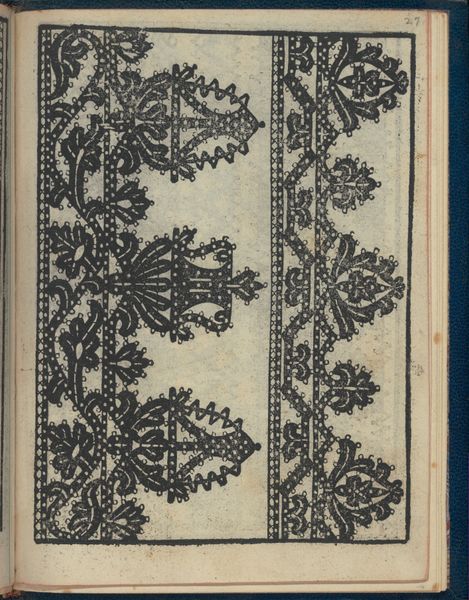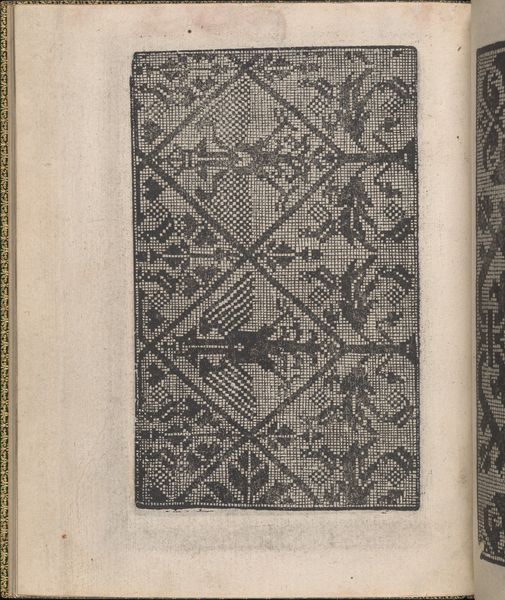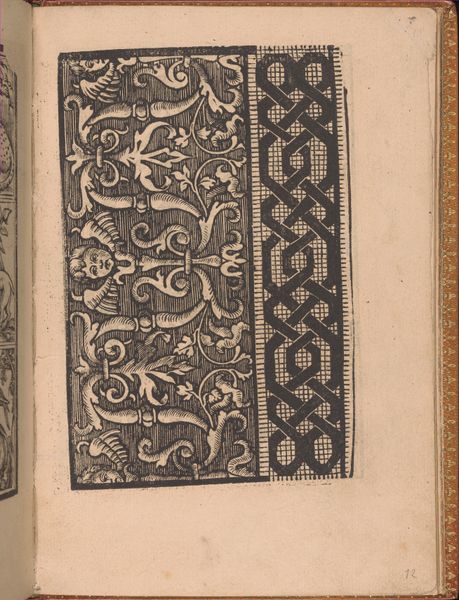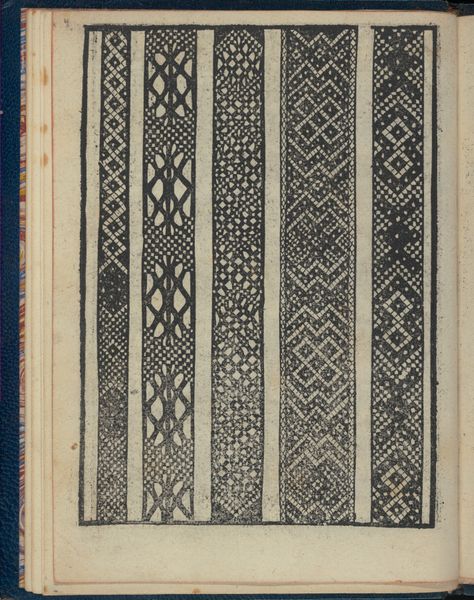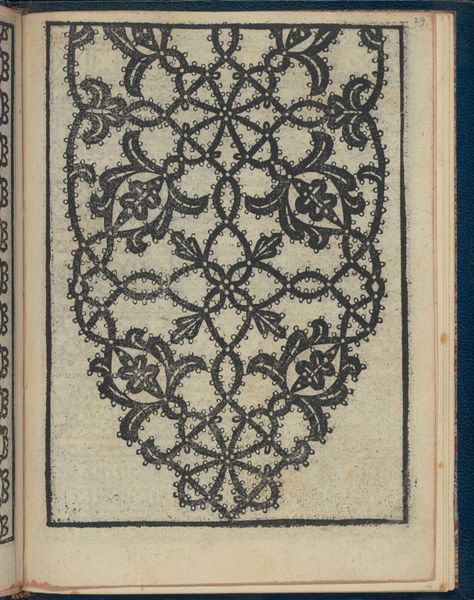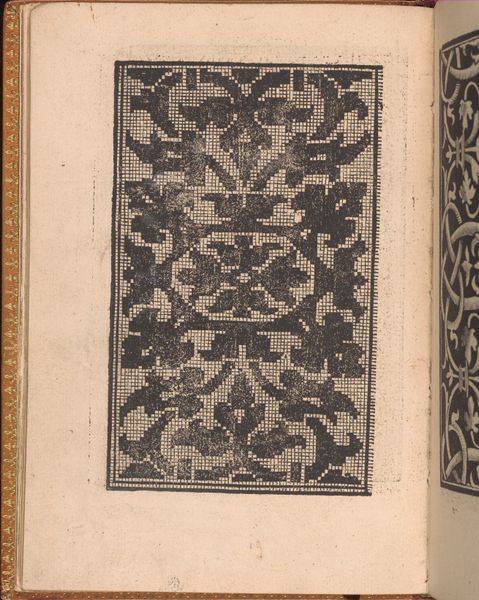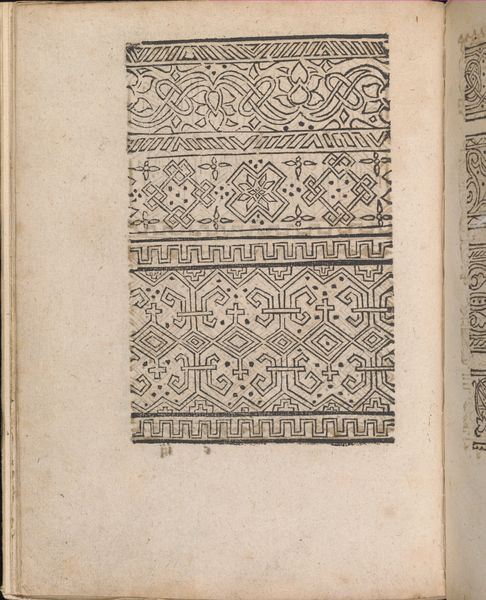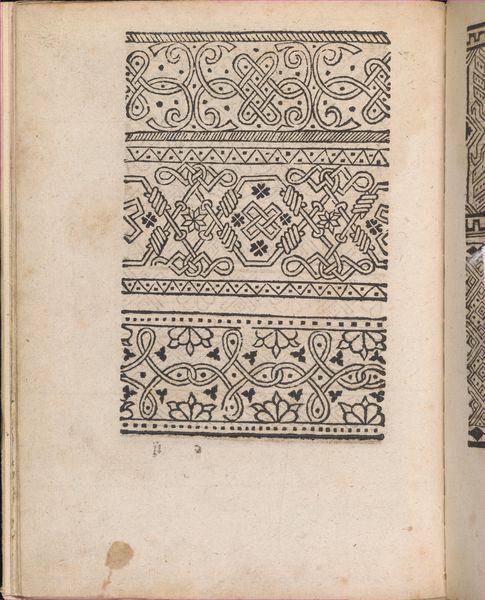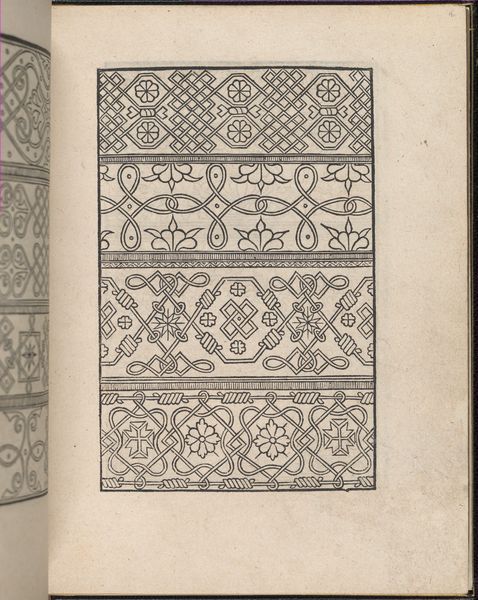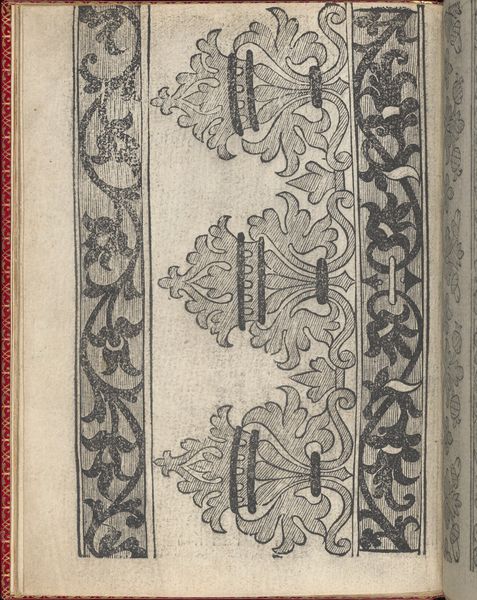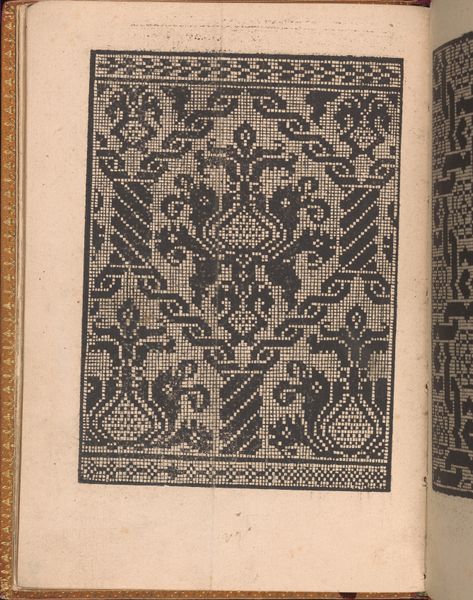
Le Pompe: Opera Nova, page 11 (recto) 1557
0:00
0:00
drawing, graphic-art, ornament, print, textile, paper, woodcut
#
drawing
#
graphic-art
#
ornament
# print
#
book
#
textile
#
paper
#
11_renaissance
#
woodcut
Dimensions: Overall: 8 1/16 x 5 7/8 in. (20.5 x 15 cm)
Copyright: Public Domain
Curator: This is a page from "Le Pompe: Opera Nova," specifically page 11 recto, a book of lace patterns produced by Giovanni Battista and Marchio Sessa in 1557. It resides in the collection of the Metropolitan Museum of Art. Editor: Intricate. I’m immediately struck by the delicacy of the designs, how finely the woodcut is executed. It gives the impression of actual lace, surprisingly light despite the medium. Curator: These pattern books played a crucial role in the social lives of Renaissance women. They provided templates for lacemaking, an essential skill linked to female virtue and domestic economy. The act of creating lace wasn’t just functional; it was a way for women to participate in visual culture, influencing fashion and status. Editor: Absolutely. Think about the labor embedded in this seemingly simple design. Each pattern represents hours upon hours of meticulous handwork – the selection and preparation of thread, the intricate knotting and weaving. This book offered a means of distributing both skill and taste more broadly. These weren’t simply passive instructions; they shaped the agency of female labor. Curator: Precisely! And it speaks volumes about how printed books mediated social behavior. These were not high art, but they circulated widely, informing what the fashionable elite wore and what ordinary women could aspire to create. They exemplify the blurring lines between art, craft, and commerce in the Renaissance. It challenges what we deem important culturally when discussing Renaissance artwork. Editor: I see what you mean about that blending of class through a shared material culture. You have the artist who created the print; and the lacemakers bringing these patterns to life, shaping a more collaborative artwork in a way, each depending on the other. It seems less about expressing pure originality, and more about shared taste across an array of makers. Curator: Right! And looking at the patterns themselves—the repeating motifs, floral elements—they tell us about broader design sensibilities of the period. There’s a language of ornamentation at play here. What can seem simple reveals the material life in a wider context. Editor: Reflecting on it now, what appeared visually delicate hints at a complicated, collaborative construction between printer, lacemaker, gender, and class, something truly material to consider. Curator: Yes, these ornamental prints, despite their seemingly humble status, had the power to shape visual culture and contribute to women's participation in artistic production in the Renaissance. A pattern for the ages.
Comments
No comments
Be the first to comment and join the conversation on the ultimate creative platform.
